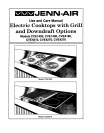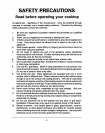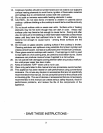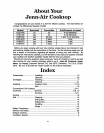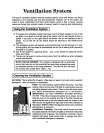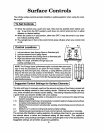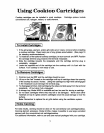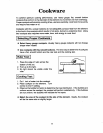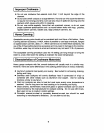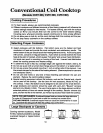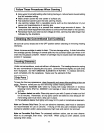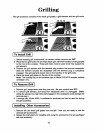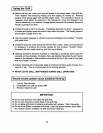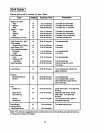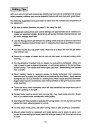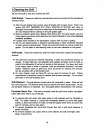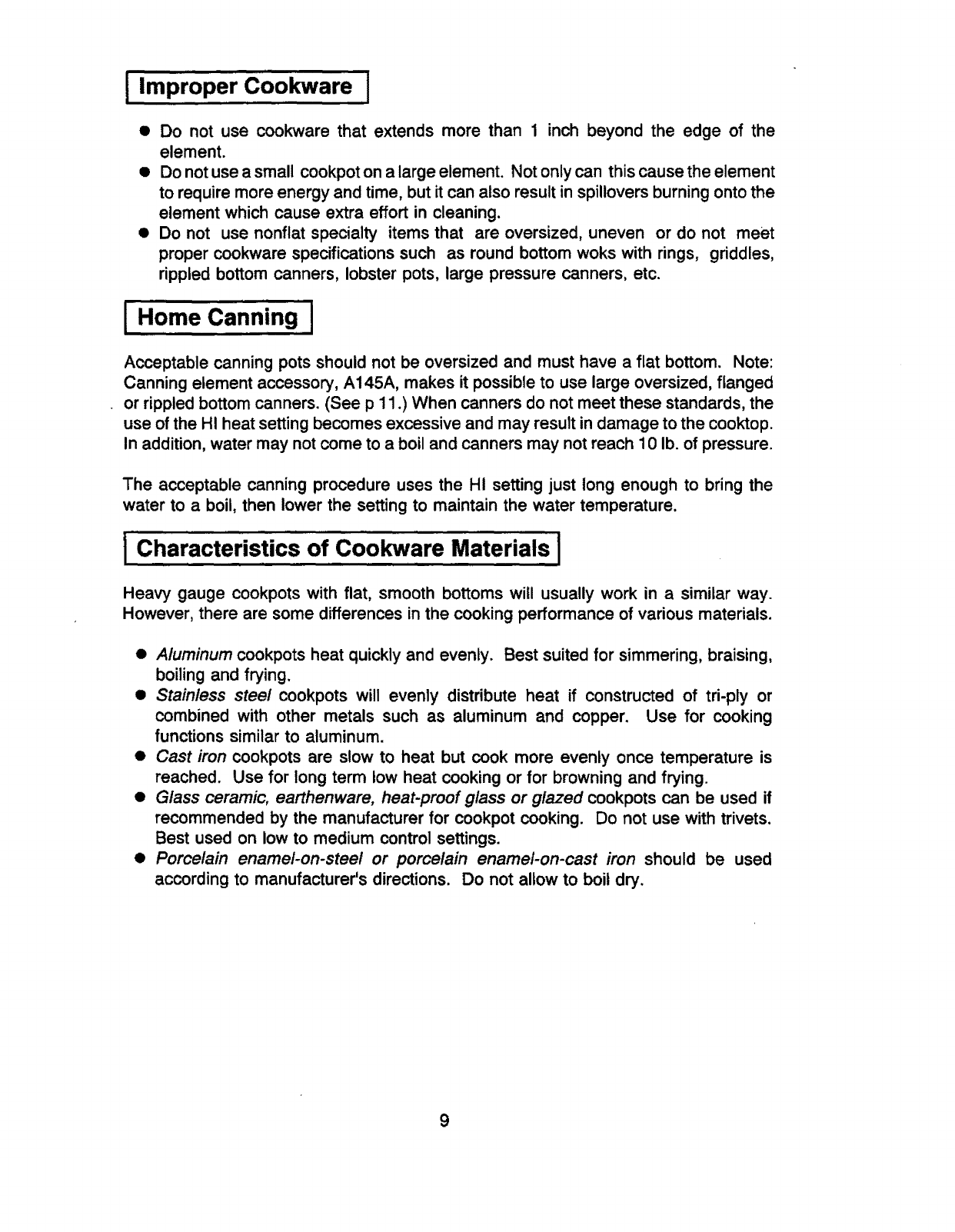
[ ImproPer C0okware I
• Do not use cookware that extends more than 1 inch beyond the edge of the
element.
• Do not use a small cookpot on a large element. Not only can this cause the element
to require more energy and time, but it can also result in spillovers burning onto the
element which cause extra effort in cleaning.
• Do not use nonflat specialty items that are oversized, uneven or do not meet
proper cookware specifications such as round bottom woks with rings, griddles,
rippled bottom canners, lobster pots, large pressure canners, etc.
i Home Canning I
Acceptable canning pots should not be oversized and must have a flat bottom. Note:
Canning element accessory, A145A, makes it possible to use large oversized, flanged
or rippled bottom canners. (See p 11 .) When canners do not meet these standards, the
use of the HI heat setting becomes excessive and may result in damage to the cooktop.
In addition, water may not come to a boil and canners may not reach 10 lb. of pressure.
The acceptable canning procedure uses the HI setting just long enough to bring the
water to a boil, then lower the setting to maintain the water temperature.
I Characteristics of Cookware Materials J
Heavy gauge cookpots with flat, smooth bottoms will usually work in a similar way.
However, there are some differences in the cooking performance of various materials.
• Aluminum cookpots heat quickly and evenly. Best suited for simmering, braising,
boiling and frying.
• Stainless steel cookpots will evenly distribute heat if constructed of tri-ply or
combined with other metals such as aluminum and copper. Use for cooking
functions similar to aluminum.
• Cast iron cookpots are slow to heat but cook more evenly once temperature is
reached. Use for long term low heat cooking or for browning and frying.
• Glass ceramic, earthenware, heat-proof glass or glazed cookpots can be used if
recommended by the manufacturer for cookpot cooking. Do not use with trivets.
Best used on low to medium control settings.
• Porcelain enamel-on-steel or porcelain enamel-on-cast iron should be used
according to manufacturer's directions. Do not allow to boil dry.



